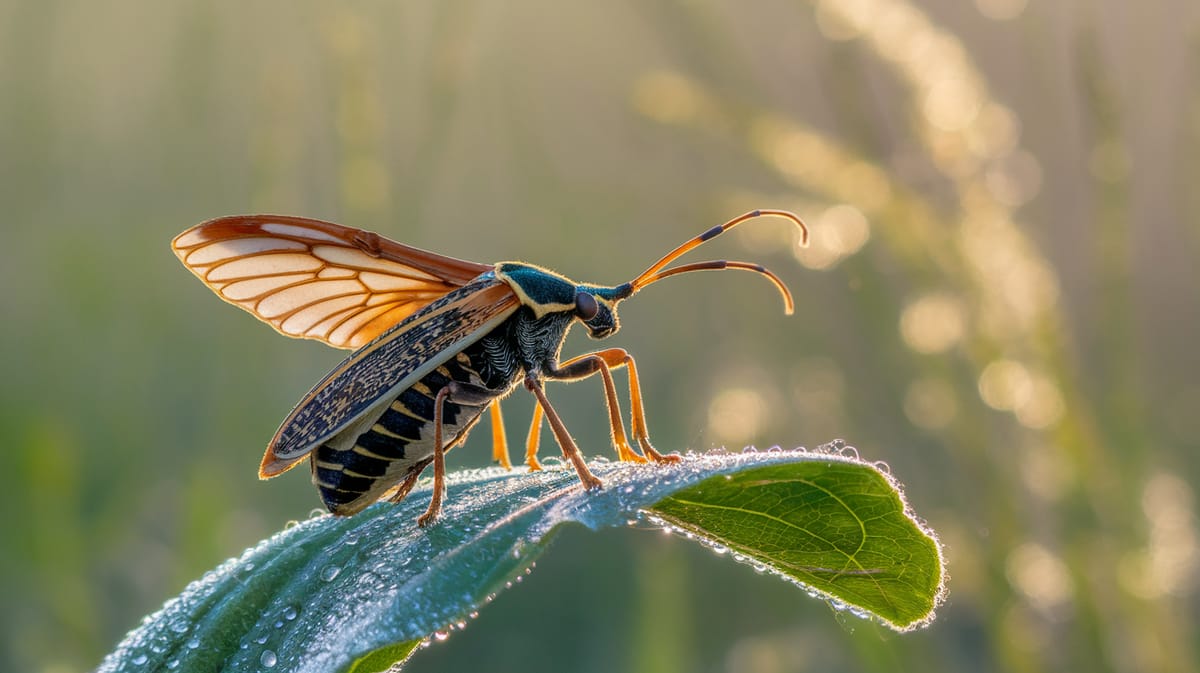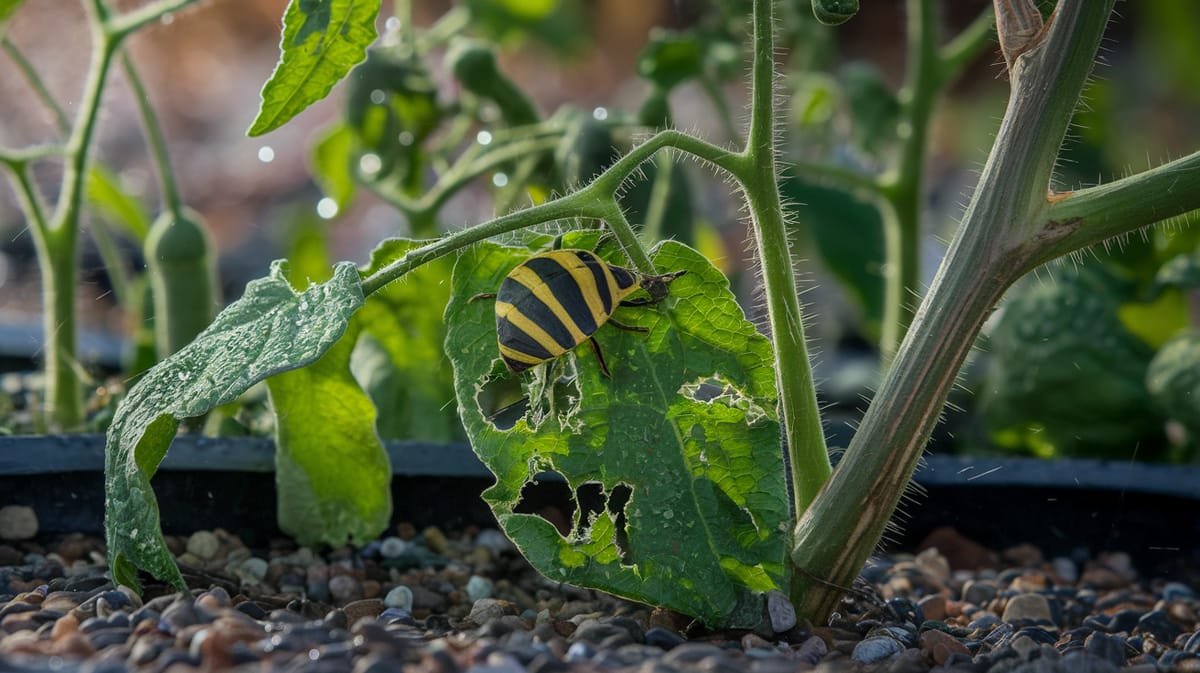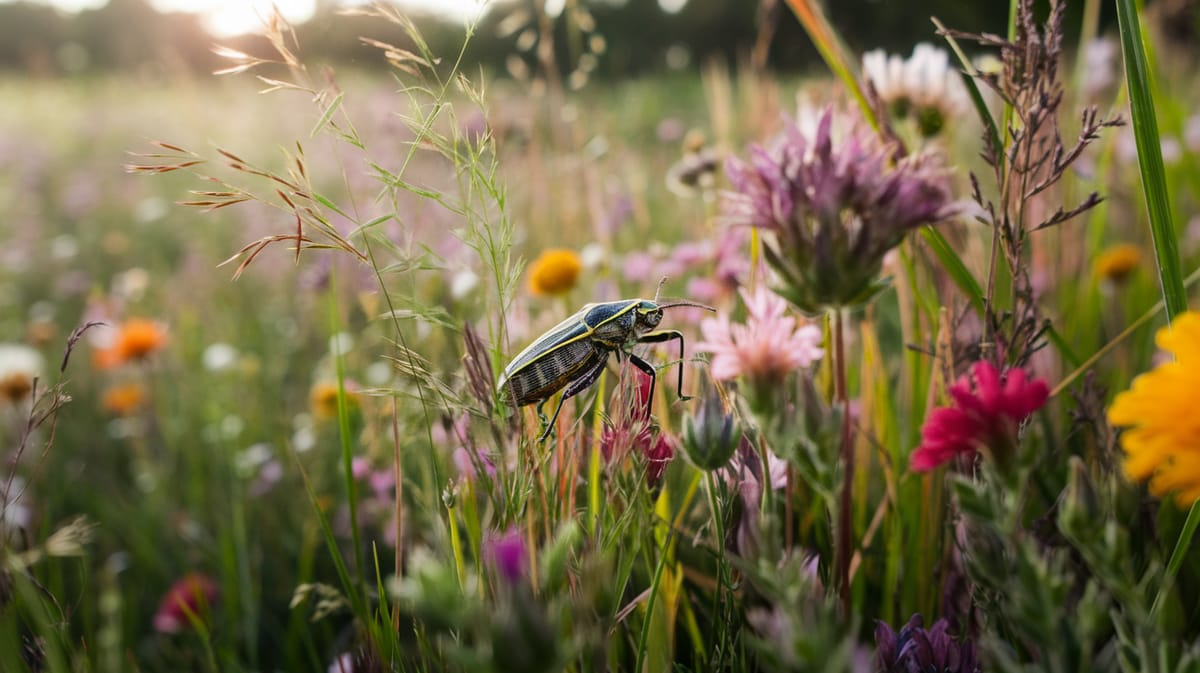Bordered Plant Bug
Vibrant and striking, the Bordered Plant Bug captivates with its distinct colorful edges and intricate patterns. Playing a vital role, it helps control plant-damaging aphid populations.

Key Insights at a Glance
Did You Know?
Taxonomy & Classification
Bordered Plant Bugs exhibit distinctive vibrant coloration and flattened bodies, reflecting their adaptation to herbivorous lifestyles in diverse environments. Let's understand the evolutionary journey and classification of these remarkable herbivores.
Genus Diversity
The genus Largus includes around 60 species, primarily found across the Americas, showcasing considerable ecological diversity.
Evolutionary Resilience
Originating in tropical regions, these bugs adapted various traits to survive climatic shifts and habitat changes over millions of years.
Lifecycle and Growth
A remarkable journey of transformation from Egg to Adult.
Egg
Tiny eggs are laid on host plants, where they develop under protective covers, ensuring optimal conditions for hatching.
Nymph
Nymphs undergo five molts, gradually developing wings and distinctive markings, while adapting feeding habits to host plants.
Adult
Fully developed adults display striking black and yellow patterns, actively feeding and participating in reproduction to sustain their population.
Dietary Habits
An adaptable forager with specialized piercing mouthparts, this insect primarily targets plant sap, occasionally seeking insect prey for nourishment.
| DIET TYPE | DESCRIPTION |
|---|---|
| Primary Diet | Mainly feeds on plant juices from a variety of crops and weeds, efficiently extracting sap. |
| Secondary Diet | Consumes seeds and fruits, supplementing its diet with nutrients from these plant parts. |
| Occasional | Occasionally preys on small insects, especially when plant food sources are scarce or during developmental stages. |

Behaviour and Adaptations
Discover the intriguing adaptations that help the Bordered Plant Bug thrive in its environment.
Vibrant Warning Colors
Bright red and black patterns deter predators by signaling toxicity.
Pheromone Communication
Uses chemical signals to coordinate with others and find mates.
Sap Extraction
Specialized mouthparts allow efficient extraction of plant sap.
Ecosystem Impact
The Bordered Plant Bug plays a crucial role in maintaining ecological diversity and stability.
Pollinator Partner
Aids in pollination by feeding on flower nectar, benefiting plant reproduction.
Nutrient Cycler
Contributes to nutrient cycling by decomposing plant material, enriching the soil.
Pest Population Regulator
Helps control pest populations by feeding on other small insects.
Conservation Challenges
Understanding and addressing the major threats to Bordered Plant Bug populations.
Habitat Loss
Urbanization and agriculture reduce natural habitats, threatening bug populations.
Chemical Exposure
Pesticides disrupt insect development and reproduction, leading to population decline.
Climate Change
Altered weather patterns impact food availability and breeding cycles.
Frequently Asked Questions
How long do Bordered Plant Bug live?
Bordered Plant Bugs typically live for a few weeks to several months, depending on environmental conditions and food availability. They undergo incomplete metamorphosis, with life stages including egg, nymph, and adult. Their lifespan may vary due to factors like predation and climate.
What do Bordered Plant Bug eat?
Bordered Plant Bugs primarily feed on plant sap. They use their piercing-sucking mouthparts to extract nutrients from a variety of plants, including ornamental and crop species. This feeding habit can sometimes lead to minor damage to the host plants.
Are Bordered Plant Bug poisonous?
Bordered Plant Bugs are not poisonous to humans. They do not pose any significant threat to human health. Their feeding habits are more of a concern to plants rather than being a direct danger to people.
Are Bordered Plant Bug endangered?
Bordered Plant Bugs are not considered endangered. They are relatively common and widespread, thriving in habitats where suitable host plants are available. Their population status does not currently raise conservation concerns.
What do Bordered Plant Bug symbolize?
Bordered Plant Bugs do not have a widely recognized symbolic meaning. As insects, they are more studied for their ecological roles and impact on plants rather than cultural symbolism. They represent part of the diverse ecosystem of plant feeders.
Do Bordered Plant Bug bite?
Bordered Plant Bugs do not bite humans. They are equipped with mouthparts designed for piercing and sucking plant sap, not for biting or stinging people. Human interactions with these bugs are generally harmless.
What color are Bordered Plant Bug?
Bordered Plant Bugs are typically black with distinctive red, orange, or yellow markings along the edges of their bodies. This contrasting coloration helps in identifying them and serves as a warning to potential predators.
Does a Bordered Plant Bug have wings?
Yes, adult Bordered Plant Bugs have wings. Their forewings are leathery near the base and membranous towards the tips. These wings enable them to fly and disperse in search of food and mates.
What does a Bordered Plant Bug look like?
Bordered Plant Bugs have a flat, oval body with prominent red, orange, or yellow borders. They measure about 10-12 mm in length and exhibit a shiny, black central body area. Their coloration and body shape make them distinctive among plant bugs.
Is a Bordered Plant Bug an insect?
Yes, the Bordered Plant Bug is an insect. It belongs to the order Hemiptera, which includes true bugs. Characterized by having six legs, a segmented body, and specialized mouthparts, they are true insects with distinct life stages.
Related Insects
Discover insects with similar characteristics to Bordered Plant Bug - including shared habitats, diets, and taxonomic classifications
Share this profile
Help others discover Bordered Plant Bug
